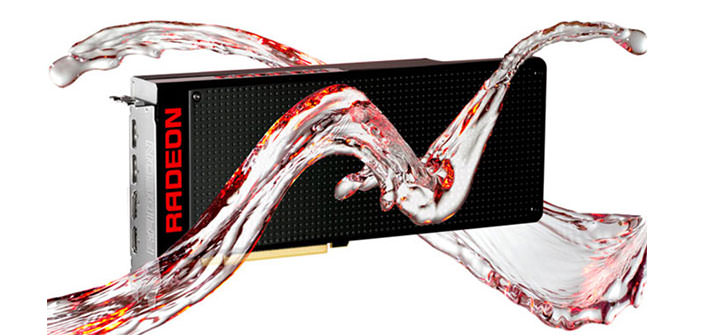AMD announced at GDC your card dual GPU-based architecture Fiji, specifically addressed to the professionals of the virtual reality and to those who seek the highest possible speed performance.
Radeon Pro Duo: This is the name chosen by AMD to identify the one that until a few days ago we mentioned the name of Fiji Gemini. Let’s talk about AMD’s proposal has two GPUs Fury range, mounted on single PCB with the main target audience, developers working in the world of virtual reality, rather than the viewers holders for virtual reality between HTC Lives and Oculus Rift.
The card uses two of Fiji GPU family, each with 1 GHz clock frequency as high and combined with 4 Gbytes of memory High Bandwidth Memory (HBM) Each GPU integrates 4,096 stream processors, thus making this the corresponding tab for two technical specifications Radeon R9 Fury X except for a clock frequency of 1050 MHz GPU that comes down from the R9 Fury X model to 1,000 MHz of this card.
The result is a power of maximum theoretical work that exceeds the quota of 16 TeraFLOPS, effectively doubling the figure of Fury X. AMD Radeon R9 board provided some performance information based on the 3DMark Fire Strike benchmark data: the resolution of 3,840 x 2,160 pixels this card generates a results of 6211 points against 4099 of the solution GeForce GTX Titan Z card which is equipped with two NVIDIA Kepler previous generation family, but at the present time card dual GPU NVIDIA top of the range.
 The card uses a liquid cooling system developed by CoolerMaster, like the rest of the selection made by AMD for the Radeon R9 Fury X card. The circuit provides for a radiator with single fan 120 mm in diameter, characterized by a thickness greater than the rule as thus to offer upper radiating surface and by very long connecting tubes that facilitate the positioning of the radiator inside the chassis.
The card uses a liquid cooling system developed by CoolerMaster, like the rest of the selection made by AMD for the Radeon R9 Fury X card. The circuit provides for a radiator with single fan 120 mm in diameter, characterized by a thickness greater than the rule as thus to offer upper radiating surface and by very long connecting tubes that facilitate the positioning of the radiator inside the chassis.
 We also note the circuitry of power supply based on 3 to 8-pin connectors each, which, added to those generated by PCI Express 16x slots represent a theoretical maximum of 525 watts that the card can receive power. The target audience is one of the most advanced users engaged in the field of virtual reality, a function primarily of the price that was announced to be equal to US $1,499.
We also note the circuitry of power supply based on 3 to 8-pin connectors each, which, added to those generated by PCI Express 16x slots represent a theoretical maximum of 525 watts that the card can receive power. The target audience is one of the most advanced users engaged in the field of virtual reality, a function primarily of the price that was announced to be equal to US $1,499.
AMD seems to have chosen, for this item, do not have as target the market for hardcore gamers as professionals engaged in the creation of virtual reality contents. From this derives also the choice of the name, with Radeon Pro, which seems to become a real family the same way as what is the Titan brand for NVIDIA solutions.
The decision to place the product on the market, specifically proposals VR is also linked to the rest of the tabs behavior with two GPUs in the traditional videogame industry: the AFR techniques, Alternate Frame Rendering, show a very small scale with various leading problems in frames per second, but also the very high average for a gaming experience that is not as smooth and flawless.
The scope of the VR is instead ideal for solutions of this type, since in practice, the advanced VR visors are composed by two independent screens that can be rendered by each one of the two GPUs on the card.
The board is scheduled to debut on the market since the beginning of the second quarter of 2016, during the month of April.

